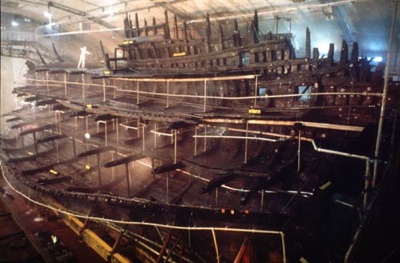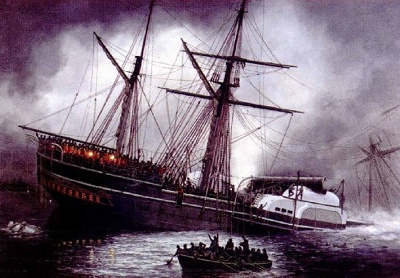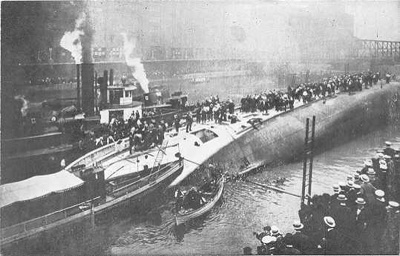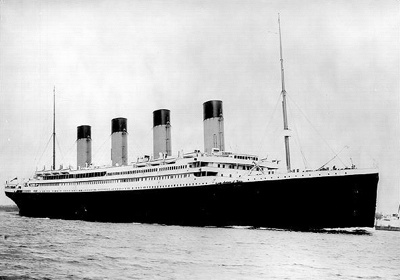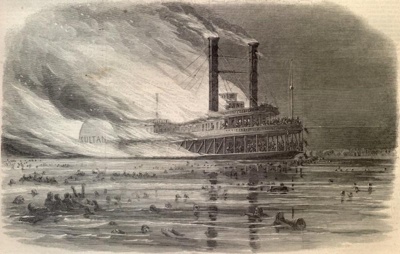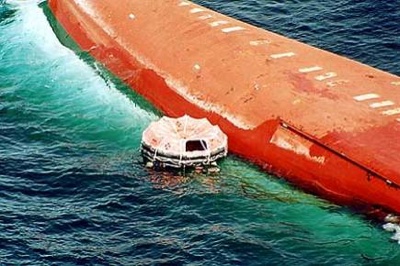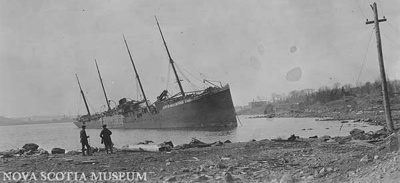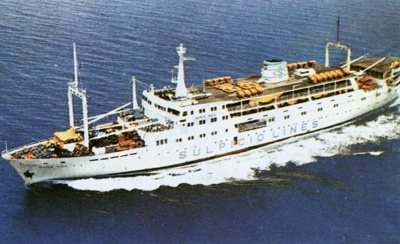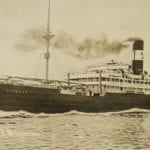 Politics
Politics  Politics
Politics  Weird Stuff
Weird Stuff Ten Bizarre Facts About The Doge Meme
 Our World
Our World 10 Ways Your Christmas Tree Is More Lit Than You Think
 Movies and TV
Movies and TV The 10 Coolest Stars to Set Sail on The Love Boat
 History
History 10 Things You Didn’t Know About the American National Anthem
 Technology
Technology Top 10 Everyday Tech Buzzwords That Hide a Darker Past
 Humans
Humans 10 Everyday Human Behaviors That Are Actually Survival Instincts
 Animals
Animals 10 Animals That Humiliated and Harmed Historical Leaders
 History
History 10 Most Influential Protests in Modern History
 Creepy
Creepy 10 More Representations of Death from Myth, Legend, and Folktale
 Politics
Politics 10 Political Scandals That Sent Crowds Into the Streets
 Weird Stuff
Weird Stuff Ten Bizarre Facts About The Doge Meme
 Our World
Our World 10 Ways Your Christmas Tree Is More Lit Than You Think
Who's Behind Listverse?

Jamie Frater
Head Editor
Jamie founded Listverse due to an insatiable desire to share fascinating, obscure, and bizarre facts. He has been a guest speaker on numerous national radio and television stations and is a five time published author.
More About Us Movies and TV
Movies and TV The 10 Coolest Stars to Set Sail on The Love Boat
 History
History 10 Things You Didn’t Know About the American National Anthem
 Technology
Technology Top 10 Everyday Tech Buzzwords That Hide a Darker Past
 Humans
Humans 10 Everyday Human Behaviors That Are Actually Survival Instincts
 Animals
Animals 10 Animals That Humiliated and Harmed Historical Leaders
 History
History 10 Most Influential Protests in Modern History
 Creepy
Creepy 10 More Representations of Death from Myth, Legend, and Folktale
Top 10 Catastrophic Shipwrecks
Most people are familiar with the tragic loss of the Titanic and most of its passengers, but it is, surprisingly, not the worst maritime disaster in history – in fact it only ranks as number 5 (based on death toll). This is a list of the most disastrous catastrophes involving ships. This list is ranked from least to most deaths.
Death Toll: 400
The Mary Rose was an English Tudor carrack warship and one of the first to be able to fire a full broadside of cannons. She was one of the earliest purpose-built warships to serve in the Royal Navy; it is thought that she never served as a merchant ship. In 1545 King Francis I of France launched an invasion of England with 30,000 soldiers in more than 200 ships. Against this invasion fleet—larger than the Spanish Armada forty-three years later—the English had about 80 ships and 12,000 soldiers, with the Mary Rose the flagship of Vice Admiral Sir George Carew. On July 19th, 1545, the two sides fought a fairly inconsequential battle (the Battle of Solent) with little damage being done to either side. Next day, toward evening, a breeze sprang up and as Mary Rose advanced to battle she capsized and sank with the loss of all but 35 of her crew. There were sources that said that the ship had fired from the port side and made a sharp turn so she could fire from the starboard side. The turn was so sharp that the ship heeled sufficiently to submerge the open gun ports, allowing enough water to enter to sink the ship. At the time, many sailors did not know how to swim as they considered this “tempting fate”. Pictured above is the hull of the Mary Rose – recovered in the 21st century. [Source]
Death Toll: 460
HMS Birkenhead, also referred to as HM Troopship Birkenhead or steam frigate Birkenhead, was one of the first iron-hulled ships built for the Royal Navy. She was initially designed as a frigate, but was converted to a troopship before being commissioned. On 26 February 1852, while transporting troops primarily of the 73rd Regiment of Foot to Algoa Bay, she was wrecked at Gansbaai near Cape Town, South Africa. There were not enough serviceable lifeboats on board for all the passengers – however the soldiers famously stood firm, thereby allowing the women and children to board the boats safely. Only 193 of the 643 people onboard survived, the soldiers’ chivalry gave rise to the “women and children first” protocol during the procedure of abandoning ship, while the “Birkenhead Drill” of Rudyard Kipling’s poem came to describe courage in face of hopeless circumstances. [Source]
Death Toll: 845
The S.S. Eastland was a passenger ship based in Chicago and used for tours. On July 24, 1915, the Eastland and two other Great Lakes passenger steamers, the Theodore Roosevelt and the Petoskey, were chartered to take employees from Chicago’s Western Electric Company to a picnic in Michigan City, Indiana. This was a major event in the lives of the workers, many of whom could not take holidays. Due to a recent act passed by Woodrow Wilson, the ship was carrying so many lifeboats that it became top-heavy and unstable. On the fateful morning, passengers began boarding the Eastland on the south bank of the Chicago River between Clark and LaSalle Streets around 6.30 a.m., and by 7:10, the ship had reached its capacity of 2752 passengers. The ship was packed, with many passengers standing on the open upper decks, and began to list slightly to the port side (away from the wharf). Sometime in the next 15 minutes a number of passengers rushed to the port side, and at 7:28, the Eastland lurched sharply to port and then rolled completely onto its side, coming to rest on the river bottom, which was only 20 feet below the surface. Many other passengers had already moved below decks on this relatively cool and damp morning to warm up before the departure. Consequently, hundreds were trapped inside by the water and the sudden rollover; others were crushed by heavy furniture, including pianos, bookcases, and tables. Although the ship was only 20 feet from the wharf, and in spite of the quick response by the crew of a nearby vessel, the Kenosha, which came alongside the hull to allow those stranded on the capsized vessel to leap to safety, a total of 841 passengers and four crew members died in the disaster. Many were young women and children. [Source]
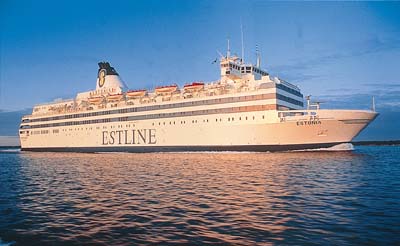
Death Toll: 852
MS Estonia, previously MS Viking Sally (–1990), MS Silja Star (–1991), and MS Wasa King (–1993), was a cruise ferry built in 1979 at the German shipyard Meyer Werft in Papenburg. The Estonia disaster occurred on September 28, 1994 between about 00:55 to 01:50 (UTC+2) as the ship was crossing the Baltic Sea, en route from Tallinn, Estonia, to Stockholm, Sweden. She was carrying 989 passengers and crew. The first sign of trouble was a strange sound of metal against metal heard around 01:00, when the ship was on the outskirts of the Turku archipelago; but an investigation of the bow visor showed no obvious damage. At about 01:15, the visor separated and the ship took on a heavy starboard list. At about 01:20 a weak female voice called “Häire, häire, laeval on häire”, the Estonian words for “Alarm, alarm, there is alarm on the ship”, over the public address system. Just a moment later an internal alarm for the crew was transmitted over the public address system. Soon after this the general lifeboat alarm was given and then the vessel lurched some 30 to 40 degrees to starboard, making it practically impossible to move about safely inside the ship. Doors and hallways became deadly pits. Those who were going to survive were already on-deck by then. A Mayday was communicated by the ship’s crew at 01:22, but did not follow international formats. Due to loss of power, she could not give her position, which delayed rescue operations somewhat. Out of a total of 989 passengers and crew on board 137 were saved. [Source]
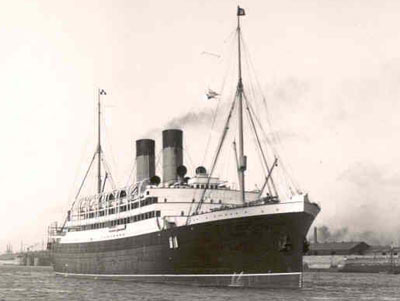
Death Toll: 1,012
RMS Empress of Ireland was an ocean liner built in 1905-1906 by Fairfield Shipbuilding and Engineering at Govan on the Clyde in Scotland for Canadian Pacific Steamships (CP). The Empress of Ireland departed Quebec City for Liverpool at 16:30 local time on May 28, 1914 with 1,477 passengers and crew. Henry George Kendall had just been promoted to captain of the Empress at the beginning of the month; and it was his first trip down the Saint Lawrence River in command of the vessel. Early the next morning on May 29, 1914, the ship was proceeding down the channel near Pointe-au-Père, Quebec (eastern district of the town of Rimouski) in heavy fog. At 02:00 local time, the Norwegian collier Storstad crashed into the side of the Empress of Ireland. The Storstad did not sink, but Empress of Ireland, with severe damage to her starboard side, rapidly shipping water, rolled over and sank within 14 minutes, claiming 1012 passengers and crewmen.
There were only 465 survivors, out of which only four were children (the other 134 children were lost) and 42 were women (the other 279 women were lost). Amongst the dead were the English dramatist and novelist Laurence Irving. Amongst the survivors, “Lucky” Tower is improbably said to have been one of the few crewmen who survived this shipwreck and the sinking of the Titanic and the sinking of the Lusitania. [Source]
Death Toll: 1,517
RMS Titanic was an Olympic-class passenger liner owned by the White Star Line and built at the Harland and Wolff shipyard in Belfast, Ireland. On the night of 14 April 1912, during her maiden voyage, Titanic struck an iceberg, and sank two hours and forty minutes later, early on 15 April 1912. At the time of her launching in 1912, she was the largest passenger steamship in the world. The sinking resulted in the deaths of 1,517 people, ranking it as one of the worst peacetime maritime disasters in history and by far the most infamous. The Titanic used some of the most advanced technology available at the time and was popularly believed to be “unsinkable” – indeed, in a 1910 White Star Line brochure advertising the Titanic; it was claimed that she was “designed to be unsinkable”. It was a great shock to many that despite the advanced technology and experienced crew; the Titanic still sank with a great loss of life. The media frenzy about Titanic’s famous victims, the legends about what happened on board the ship, the resulting changes to maritime law, and the discovery of the wreck in 1985 by a team led by Robert Ballard have made Titanic persistently famous in the years since. [Source]
Death Toll: 1800
The steamboat Sultana was a Mississippi River paddlewheeler destroyed in an explosion on 27 April 1865. This resulted in the greatest maritime disaster in United States history. An estimated 1,800 of the 2,400 passengers were killed when one of the ship’s four boilers exploded and the Sultana sank not far from Memphis, Tennessee. This disaster received somewhat diminished attention as it took place soon after the assassination of President Abraham Lincoln and during the closing weeks of the Civil War. Most of the new passengers were Union soldiers, chiefly from Ohio and just released from Confederate prison camps such as Cahawba and Andersonville. The US government had contracted with the Sultana to transport these former prisoners of war back to their homes. The cause of the explosion was a leaky and poorly repaired steam boiler. The boiler (or “boilers”) gave way when the steamer was about 7 to 9 miles north of Memphis at 2:00 A.M. in a terrific explosion that sent some of the passengers on deck into the water and destroyed a good portion of the ship. Hot coals scattered by the explosion soon turned the remaining superstructure into an inferno, the glare of which could be seen in Memphis. [Source]
Death Toll: 1,863
MV Le Joola was a Senegalese government-owned ferry that capsized off the coast of Gambia on September 26, 2002. The disaster resulted in the deaths of at least 1,863 people. On September 26, 2002, the ferry Joola set sail from Ziguinchor in the Casamance region on one of its frequent trips between southern Senegal and the country’s capital Dakar. It was about 1:30 p.m. At the time of voyage the ship was designed to carry approximately 580 passengers. In all, almost 2,000 passengers are believed to have been on board. The last call from the ferry staff broadcast to a maritime security center in Dakar was at 10 p.m. and reported good travel conditions. In Titanic-culture style, people were dancing and drinking inside the ship to the sound of a live band playing. At around 11 p.m., the ship sailed into a storm off the coast of Gambia. As a result of the rough seas and wind, the ferry quickly capsized, throwing passengers and cargo into the sea. Detailed reports indicate that this happened in less than five minutes. Only one lifeboat was deployed and was able to transport 25 people. Government rescue teams did not arrive at the scene until the morning following the accident, although local fishermen rescued some survivors from the sea several hours before. [Source]
Death Toll: 1,950
The Halifax Explosion occurred on Thursday, December 6, 1917, when the city of Halifax, Nova Scotia, Canada, was devastated by the huge detonation of a French cargo ship, fully loaded with wartime explosives, that had accidentally collided with a Norwegian ship in “The Narrows” section of the Halifax Harbour. Approximately 2,000 people (mostly Canadians) were killed by debris, fires, or collapsed buildings and it is estimated that over 9,000 people were injured. This is still one of the world’s largest man-made, conventional explosions to date. At 8:40 in the morning, Mont-Blanc, a French cargo ship that was chartered by the French government to carry munitions, collided with the unloaded Norwegian ship Imo (pronounced E-mo); chartered by the Commission for Relief in Belgium to carry relief supplies. Mont-Blanc caught fire ten minutes after the collision and exploded about twenty-five minutes later (at 9:04:35 AM). All buildings and structures covering nearly two square kilometres along the adjacent shore of the exploded ship were obliterated, including those in the neighbouring communities of Richmond and Dartmouth. The explosion caused a tsunami in the harbour, and a pressure wave of air that snapped trees, bent iron rails, demolished buildings, grounded vessels, and carried fragments of the Mont-Blanc for kilometres. Pictured above is the Imo after the explosion. [Source]
Death Toll: 4,375
The Doña Paz was a passenger ferry that sank after colliding with the oil tanker Vector on December 20, 1987. The Doña Paz was en route from Catbalogan, on Samar Island, Philippines, to Manila when, while it was in the Tablas Strait, between the islands of Mindoro and Tablas, it collided with a small oil tanker, the Vector, which was carrying 8,800 barrels of petroleum products. The Vector’s cargo ignited and caused a fire that rapidly spread onto the Doña Paz, which sank within minutes. Two of the 13 crewmembers aboard the Vector survived but all 58 crew of the Doña Paz died. The official death toll on the ferry is 1,565 although some reports claim that the ferry was overcrowded and that the true death toll was at least 4,341. The ships would put the death toll at 4,375 although admitting that only 1,568 were on the manifest (still more than the licensed maximum of 1,518). The 21 (or 24) survivors from the ferry had to swim, as there was no time to launch lifeboats. An inquiry later revealed that the crew of the Vector was under-qualified and that the boat’s license had expired. It is the worst ferry disaster and the worst peacetime maritime disaster in history. [Source]
This article is licensed under the GFDL because it contains quotations from the Wikipedia articles cited above.
